|
3/28/2024 0 Comments The Best Balance Tips for Skaters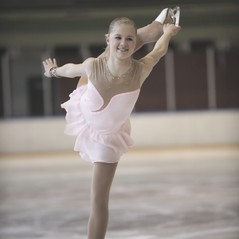 Figure skater showing good balance, smiling and looking happy in a catch spiral Figure skater showing good balance, smiling and looking happy in a catch spiral Improving our balance isn’t reserved for the ice or off-ice conditioning. In fact, everything in the universe is about balance-- the scales of justice our ecosystem education the human body relationships Balance is not about staying in one static state.. it’s a gentle moving back and forth between different sides. Like the pendulum action of the free leg on the American Waltz! Some systems and people can withstand some pretty wild extremes on either side of center… and others are a little more delicate. And most of the time, the level of extremes that we can withstand as humans changes over time, due to age, health, and outside factors. World champion Deanna Stellato-Dudek is able to withstand the intense training of elite pairs skating because she dedicates several hours a day to conditioning AND recovery. The injury and burnout that forced her out of the sport years ago were a result of major imbalance in her training and life. Very few things push the actual limits of our physical balance as much as skating. But what about the balance of our internal systems? Of our minds and our spirits? The 8 limbs of yoga are a practice dedicated to observing and finding that balance. The first two limbs - the yamas and the niyamas - include different mindsets and habits that, when integrated and balanced, lead us on the path to a happy life. Practicing them takes time and awareness. The rest of the limbs are physical and mental practices that help us slow down and observe our habits. They help us practice and integrate the yamas and niyamas, so we can reach that blissful, balanced state of ease. So we can flow into to the blissful zone on and off the ice. In the Skating Yogi Membership we practice the 8 limbs, learning to balance the yamas and niyamas. Join the waiting list today.
0 Comments
10/13/2023 0 Comments It's the Little Things That Count - Five Reasons Skaters Should Practice Basic Skating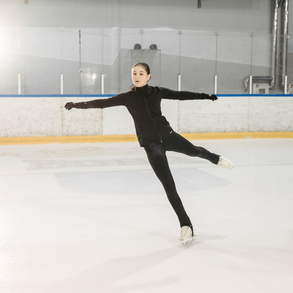 Practicing basic skating skills Practicing basic skating skills I’ve been observing skating progress accounts on social media over the past couple of years, and I’ve noticed how much focus there is on “achieving” new tricks. I haven’t asked why, but I have a hunch it’s the same reason younger skaters and parents fixate on new jumps…
Seasoned coaches will agree, though, that it’s even more important to practice the “simple” stuff. Below are five reasons why. 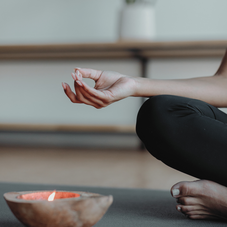 Skater practicing candle gazing to improve focus Skater practicing candle gazing to improve focus Right now in one of my weekly yoga classes for figure skaters, we have a hodge podge of injuries. One skater has a hairline fracture of the wrist, another with a strained foot, and another with a strained hamstring. Then, I have my own injury that has plagued me for months–a gluteus medius tear that will be surgically repaired in a few days. Thank goodness the days of “no pain no gain” in youth sports in the US are disappearing (even if that attitude still persists in many parts of society and in many sports cultures across the world). As my teacher at Yoga East always say, “no pain, no pain” is a much better way to be. Of course, sometimes kids say “owww, it hurts” every time you ask them to use a muscle, and learning to distinguish between effort and the accompanying discomfort vs. actual pain is part of the process of being human and especially of learning to be an athlete. This need for awareness is a major reason why I believe that continuing to practice yoga (in an appropriate, non-harmful way) while injured is so important. I give options to all of the students, especially those with injuries, and let them know that they are in charge–if they don’t feel comfortable trying something or begin to feel any pain, then we need to stop and find a different option for them. We also have been incorporating more exercises for the other limbs of yoga (yamas and niyamas, pranayama, dharana, pratyahara), which are crucial for a well-rounded practice. After all, the essence of practice is simply exploration and awareness of the mind and body, not perfection. 6/2/2023 0 Comments Do This Simple Breathing Exercise Anywhere to Regulate Emotions and Train Smarter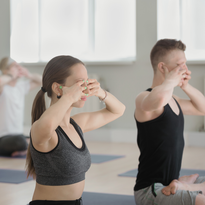 Figure Skaters practice the Bee's Breath (Brhramari) Pranayama as part of their off-ice training Figure Skaters practice the Bee's Breath (Brhramari) Pranayama as part of their off-ice training You’re on a crowded session with the music blaring, and no one seems to be paying attention. You are stressed over schoolwork and are starting a new job this weekend, too. You just really, really wanted to work on your lutz (single, double, or triple?) this session, but a beginner keeps spinning in the lutz corner and a group of teens is full-on procrastination via socialization in the other. When you finally spot an opening to put a jump up, you’re already so agitated that the attempt turns into a massive flop. You need a quick exercise to get you back on track before trying again. Sure, a jump drill sometimes helps redirect your thoughts, but this agitation you’re feeling at this moment isn’t technical. It’s physiological…. Tightness in the chest, shallow breathing, tense shoulders, legs on the ready. Like a cat ready to pounce on its prey, you are ready to pounce into the opening in the traffic for that jump. Except… you are attempting a very technical skill that requires full-body coordination. And you must land on an ice knife with beauty and precision. Skating should be your happy place, not the source of your stress! There are simply too many stimuli! If only you could just block out the chatter, slow the breath, relax the shoulders, and calm the racing thoughts. The Bee’s Breath (Bhramari) technique - can help. Yoga is perhaps the most important component of off-ice training for a well-balanced figure skater.
This is not to say that mental training, conditioning, plyometrics, nutrition, off-ice spinning, and off-ice jump training are not important. It’s all important! And as skating folks–coaches, parents, and skaters–we have to juggle our time, money, and energies, based on all the factors and realities of our current situation. What’s right for one moment or goal, may not be a top priority for another moment. Of all the off-ice training a skater might do, though, yoga is the most well-rounded, holistic, all-encompassing piece. Yoga, when taught well, is about slowing down to cultivate awareness and self-knowledge. Yoga is the off-ice training that helps skaters assimilate all the other aspects of training, while also helping them develop an inner confidence, calm, and love that will help them withstand the chaos and frenetic pace of a highly competitive sport and world. The framework I use to teach yoga to figure skaters is based on Patanjali’s 8 limbs of yoga. This means that I teach positive mindset and training habits, philosophy, breathwork, focus, and concentration, as well as physical postures. Because while yoga is not really about developing a deeper backbend or touching your toes (even though these things often happen), it is very true that most skaters find it easiest to begin studying yoga through movement and asana (physical postures). It’s what they’re used to and what makes the most sense to them! So, I’ve compiled my favorite asanas for figure skaters to use as a starting point for their yoga practice. These asanas all have strong applications to movements or positions on the ice, so they should be familiar to most skating folks. This is the last installment of a 3-part series teaching a comprehensive list of my top picks of yoga poses (asanas) for figure skaters. To learn about the other asanas, visit here for Part I and here for Part II. 5/12/2023 0 Comments Yoga Training for Figure Skaters is Not What You Think - and Top Asanas for Skaters Part II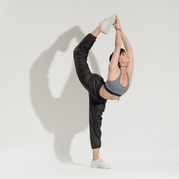 A skater looking blissful while practicing their Biellmann A skater looking blissful while practicing their Biellmann When skating folks think of yoga, most of us picture a Biellmann, Y, I, or pancake. Maybe we even picture Kamila Valieva or some other uber-flexible athlete looking blissful in one of these positions. While it’s true that many yoga postures are similar to these well-known feats of flexibility, the main purpose of yoga is NOT THE POSE. You read that right. It was never really about the poses! It is true that yoga has been around for thousands of years, and that different traditions of yoga from different era and parts of India have different frameworks and beliefs. It is also true that there is no known mention of most of the modern physical yoga postures until the 20th century.
Several postures have been found engraved on ancient temples in India, and only 15 postures (yes! only 15!) were mentioned in the Hatha Yoga Pradipika (an authoritative yoga text from the 15th century). But the Hatha Yoga Pradipika and Patanjali's Yoga Sutras make it clear that the physical practice, the asana, is to help the yogi learn to control and discipline the mind and body. The most commonly cited yoga text and framework used today is the 8 limbs of yoga outlined in Patanjali's Yoga Sutras, which is the framework that I use for applying yoga to skating. (For a more in-depth explanation of the 8 limbs and a visual application to the skating journey, visit this post.) As with most traditions, yoga has evolved throughout the centuries, with different lineages of teachers filtering their teaching through their own experiences. What has remained true, though, is that yoga's purpose is to help you lead a happy, purposeful life, generally in service to others and to your interpretation of a higher purpose or power. It is NOT about being able to achieve lotus position, or stand up out of a backbend, or have an Instagram worthy Biellmann position. Yoga is the practice, and yoga is the destination. In other words, the practice is the path… For skaters, the yogic path very closely parallels the skating journey... It is showing up every day, putting in the work with excitement and joy, without being attached to the outcome. It is practicing the balance of effort and ease, contentment and burning drive. It is being ok with the unknown, giving up the illusion of control, and facing new circumstances with curiosity and grace. All of this is what leads to moments of bliss. And you don’t have to put your blade to your ear to be able to do that! Any skater can practice yoga and learn to feel that they can succeed at whatever their coaches and their life throws their way. By now you’ve probably read or heard many times that yoga can help skaters with issues they have to tackle:
performance anxiety breath control distractions negative self-talk improper goal setting unconstructive training environments and more… Plus, there are other “fitness” based areas that yoga can help skaters improve–balance, strength, flexibility, proprioceptive awareness, etc. Yoga is not enough to fix all our problems, but it can help us see them in a new light and learn to stand steady and undisturbed while facing them. It can help us turn a journey based on comparison into a journey of self-actualization. 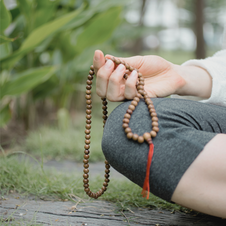 A skater practices mantra meditation using mala beads as part of their mental training routine. A skater practices mantra meditation using mala beads as part of their mental training routine. Mantra repetition, a powerful form of meditation, might be the missing link in your mental training. A mantra is a word, statement, or sound recited repeatedly out loud or silently to aid in concentration or to help redirect focus to a desirable outcome. Mantra meditation helps us become aligned with our goals. In Sanskrit, “man” means mind, and “tra” means vehicle. Just as Warrior II is a vehicle for practicing asana (physical postures), a mantra is a vehicle for developing the sixth limb dharana, or concentration. For this reason, sometimes mantras are called the “asana of the mind”. The first recorded use of mantras was over 3000 years ago. Today, they are widely used in nearly all religions (repeated prayers) and in many secular spaces throughout the world. The lead character of my favorite movie “French Kiss” is petrified of flying–has full-blown panic attacks–but she dreams of going to Paris with the love of her life. In the opening scene, she goes through a very expensive “U Can Fly” simulation. As she becomes increasingly agitated, the facilitator says over the loudspeaker “Kate, don’t forget your mantra”. Even in 1995 when this movie was released, the idea of using a mantra to help change subconscious thoughts and battle anxiety was part of popular culture. The vibrations of the sounds, the repetition, and the spirit behind the meaning all contribute to the many benefits of mantra repetition: Studies show mantra meditation can help lower anxiety and improve overall mental health, improve awareness, lower blood pressure, and potentially lessen intrusive thoughts and improve symptoms of PTSD. 3/10/2023 0 Comments Learn to Land with Eagle PoseI wasn’t taught to cross my legs in a jump until I was 13 and started training in a different city. My first coaches were good-hearted people with a love for skating whose techniques had come from a different era. I was learning to jump like Sonia Henie.
I am a daughter of teachers, so I always see things from the teacher’s point of view, and I wanted to trust my coach. But I watched a lot of skating on TV in the 80s and paid attention to the good skaters, so something didn’t seem right. When the technique didn’t make sense, I knew there was deeper instruction to be found. Once I began crossing my legs, it was like a whole world of possibilities opened up. I actually started to land some jumps! Maybe this is why I love exercises that work on back spins and crossed legs so much. They bring me back to that light bulb moment when my skating world changed forever. 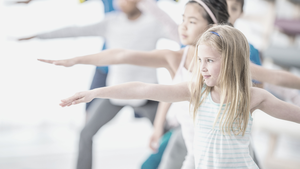 Young skaters practicing yoga Young skaters practicing yoga Whether you are focused on athletic achievement or life lessons, creating a safe space is crucial for the well-being of everyone involved. As a skater, I trained in environments that, from the outside, appeared healthy and safe. There was no physical or sexual abuse that I am aware of, and there was none of the heinous screaming and name-calling that still exists in many rinks. However, when I was younger, my coaches behaved like mean girls in club politics and created ugly rivalries where there should have been collegiality and friendship. Later, at a different facility, my peers had weekly weigh-ins, and I was applauded and revered for drastic weight loss that led me down a decades-long path of eating disorders. In yet another facility, I was made to feel like an imposter–just a “tester” among those actively competing. As a coach, I have always tried very hard not to repeat the mistakes of my teachers. Most of them were good-hearted with good intentions, even if they were often blinded by their own competitive nature and their own past wounds and teachings. So, without a good model in my background, I repeated some of the same mistakes. Pushed kids when they didn’t need to be pushed, compared skaters to one another when I shouldn’t have, offered dietary advice without being a licensed dietitian and tried to convince a skater to stay in the sport when what she really, really wanted was to be done. For many years I coached in an environment that closely followed Safesport guidelines. Yet, it didn’t feel healthy and was arguably quite harmful to me and many others. Playing favorites, forming cliques, ignoring skaters who need extra emotional support, and politicking amongst coaches are surefire ways to ruin a healthy, collegial environment. While Safesport and SkateSafe attempt to prevent and prosecute the most egregious acts of abuse in our sport, they fall short in many ways, especially in instances of emotional abuse. Their shortcomings are beyond the scope of the post, so I will simply say that I believe we need good models of conduct and spirit that go deeper than US Figure Skating’s Code of Conduct and the PSA’s professional standards. |
Author // the skating yogiMy name is Sarah Neal. I have been immersed in the world of figure skating for over four decades. I have seen firsthand the abuse that happens at the higher levels of our sport and experienced how that trickles down into unhealthy training practices and habits at the grassroots. I have seen this play out in the operations of the very institutions that control our sport. Whether for a profession or hobby, pursuing skating should be a joyful, rewarding process, an opportunity for athletic and personal growth, and a place to build lasting friendships. Archives
March 2024
CategoriesAll Athlete Well Being Athlete Well-Being Deep Connections Embodied Movement And Meditation Practices Life After Competition Mindful Living |
Search by typing & pressing enter

 RSS Feed
RSS Feed